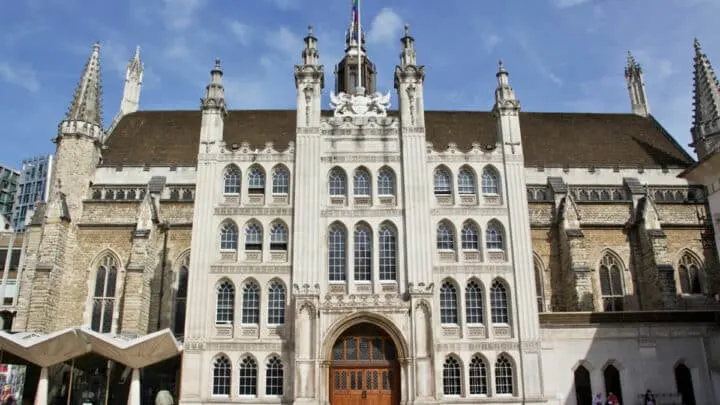We explore the history and the sights at London’s Guildhall – perhaps one of the most important buildings in the city.
London’s Guildhall is a pretty unique place. The Grade I Listed building sits on a site that’s been important to Londoners since this city was known as Londoninum, and as super ancient things go in London ranks as one of our favs.
That’s in part due to the stunning Gothic architecture and the little fact that it’s over 800 years old…. Yes, we’re not kidding. It’s one of those ‘only in London’ type things.
What happened to make this possible? Well, let’s find out.
Why Visit Guildhall?
For London history in one of its finest examples and a good look at all the below…
The Guildhall Art Gallery
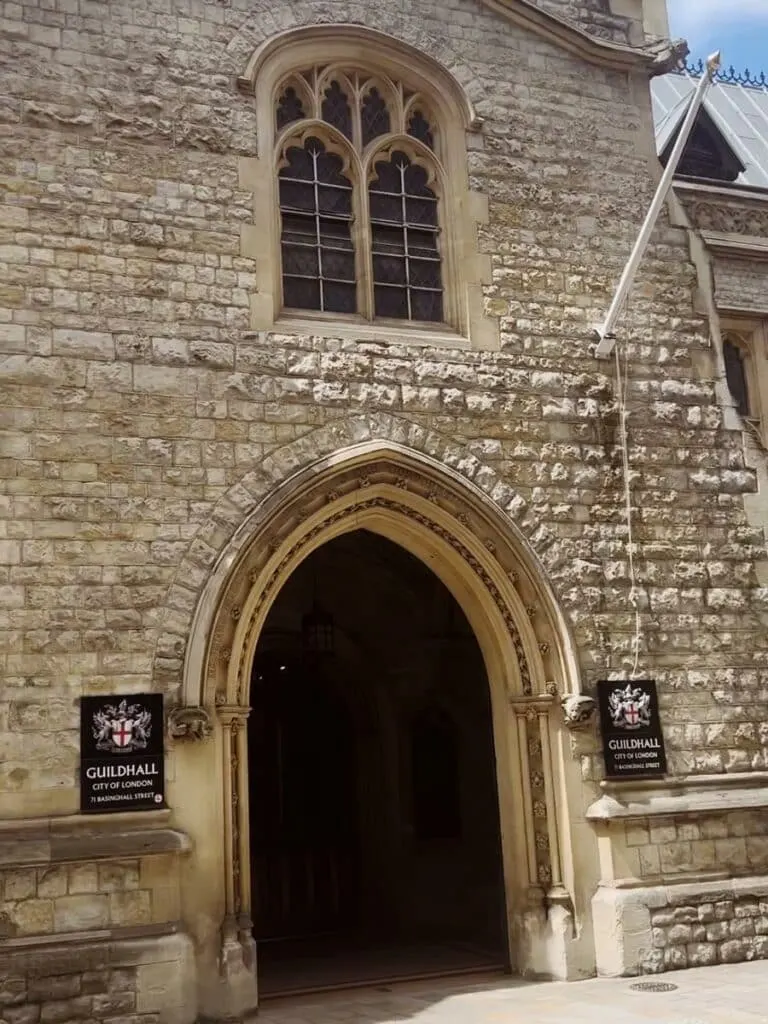
One of the Guildhall’s biggest draws (and probably the best way to see around the inside of this rather impressive building) is the Guildhall Art Gallery.
They don’t have anything modern so don’t come expecting to see a Banksy or a Basquiat. What you’ll find is an impressive collection of works from the Victorian, Pre-Raphaelite and early Impressionist eras.
Their permanent collection boasts paintings by Tissot, Jan Griffier the Younger, Logsdail and many more, sketching a story of London’s past half millennia through artists that have chosen it as their subject.
The Roman Amphitheatre
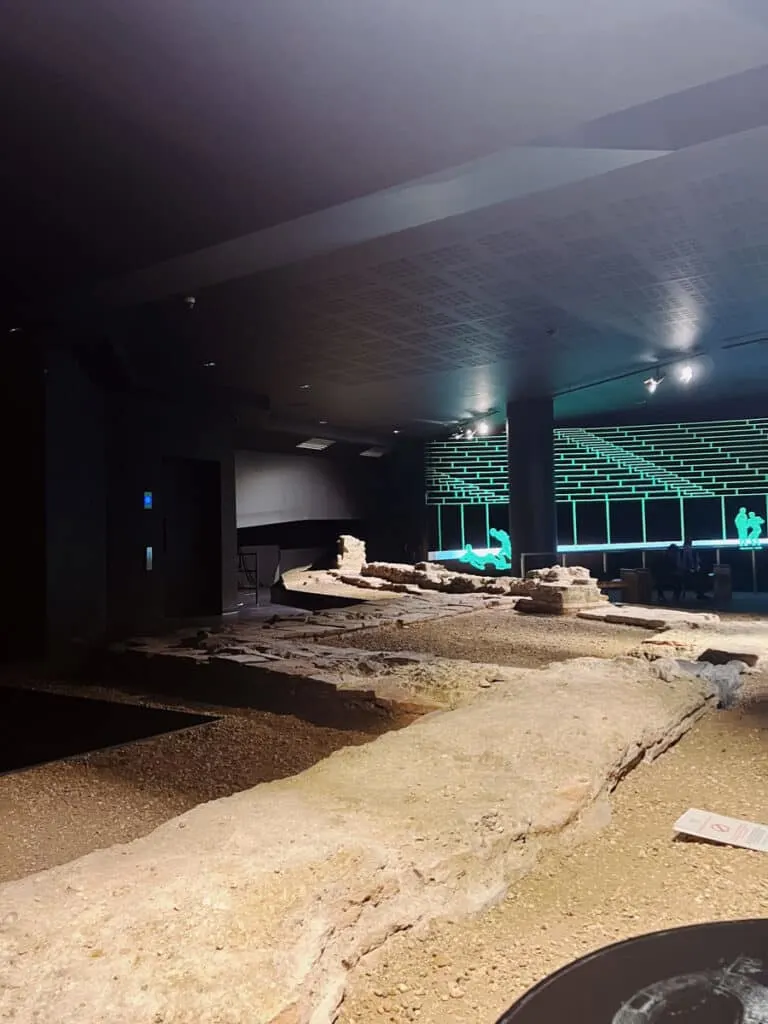
One of the most unusual things you’ll find at the Guildhall is a Roman Amphitheatre. Yep, no joke. In fact, as you’ll find out below, this may be the very reason the Guildhall is where it is.
There’s not much left of it, but the foundations are bolstered with the help of some installations that visualise the scale as it would have been during the time of Roman London.
For Private Events and Tours
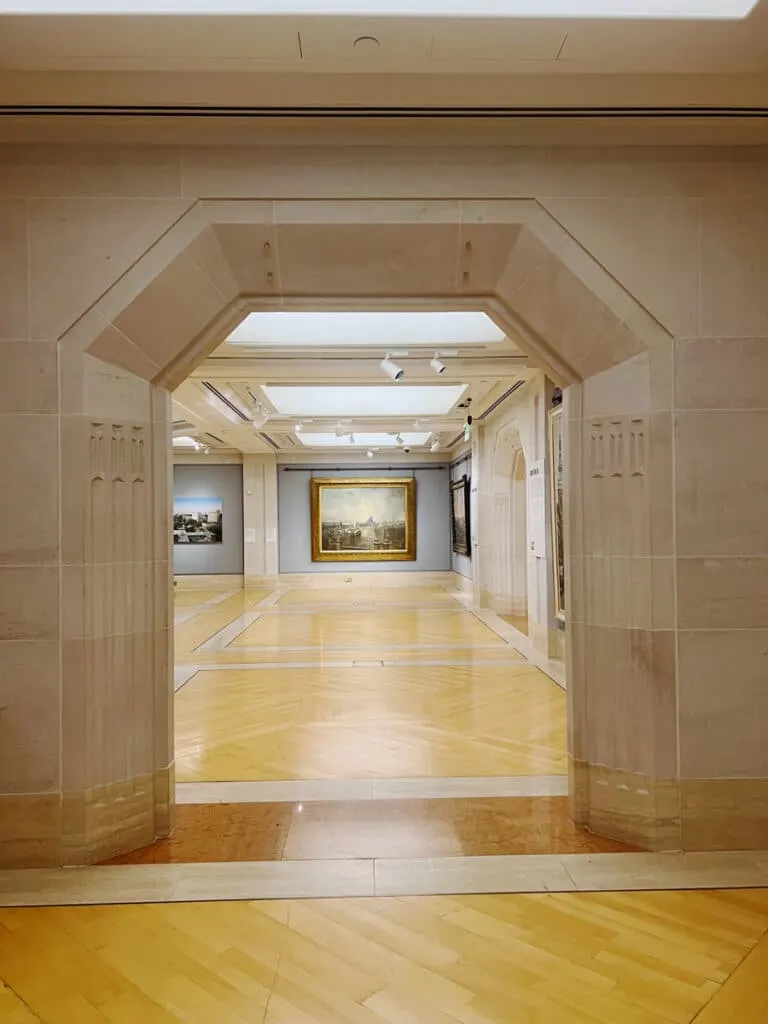
The Guildhall has many other truly stunning rooms but most of them aren’t regularly open to the public. Annoying, yes, but they do have the excuse for using these rooms as centres of business, government and actual guild meetings.
If you want to see for example, the guildhall – an impressive dining hall that dates back to the 1400s – or the fascinating underground crypts, you’ll have to take a tour or book them out for a private event at a price we dare not even imagine.
For more info on the tours, check here
The History of Guildhall
Roman
Back in the days when London was called Londinium, the site we find the Guildhall on today would have been one centre of town. It has a lot to do with that amphitheatre we mentioned above.
2000 years ago it was the largest amphitheatre in the British Isles, the jewel of Roman London where savage barbarian celts would have been pitted against gladiators in deathmatches and blood sport.
It was not, though, an important site for administration. The Forum, where this would have happened, was near to what is today Leadenhall Market.
Saxon
Fast forward about 400 years and the Romans have gone and the Saxons are in charge. This is where things start to get interesting. It seems the Saxons picked up on the fact that this was an important site of the old city as they picked it as the location for their guildhall.
We speculate that this was probably because of the scale of the Roman amphitheatre. This isn’t just based on our post-work pints chat though, excavations show that a later gatehouse from the 13th century used the same entrance as the amphitheatre, indicating much of the structure was probably still intact then.
Either way, it’s with the Saxons, sometime between 400 AD and when the Normans show up that a guildhall was first built here in London.
Mediaeval to the Present Day
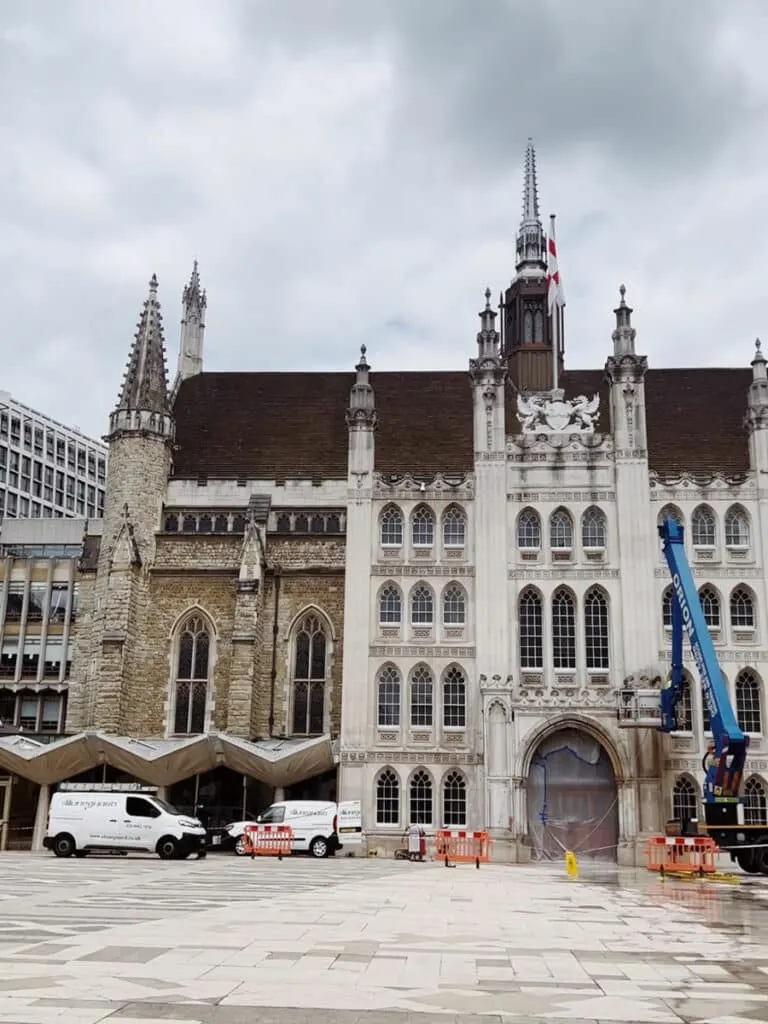
It’s in the mediaeval period that we start to see the Guildhall as we know it today, and yes, some of it really does date back to this long-ago date. The Great Hall for one was finished in 1440.
Over the years extra bits have been added, and some changed. The roof, for one, was burnt off during the Great Fire of London, repaired and then destroyed again during WWII.
In the many years between 1440 and the present day the Guildhall has played the stage for a handful of very historic events, not least the trial of Lady Jane Grey and Chopin’s last ever public performance.
Today the Guildhall is the HQ of the City of London Corporation. They run the goings on in the world’s oldest continuous democracy from these halls. If you want to know more about that fascinating bit of history, follow the link below…
Read More: The Incredible History of the City of London: The World’s Longest Continuous Democracy
Guildhall: Practical Information
Address: 71 Basinghall St, London EC2V 7HH
- To visit the Guildhall, either go to the art gallery or book yourself in on a tour here. The art gallery is usually open to the public at regular hours but we suggest you check on their website first as they do have a tendency to close it for public events.

